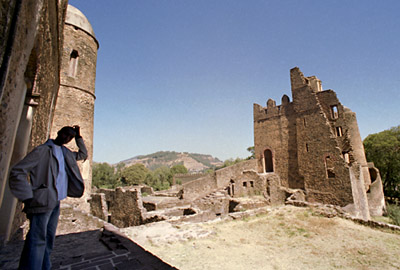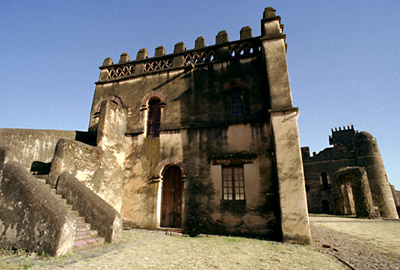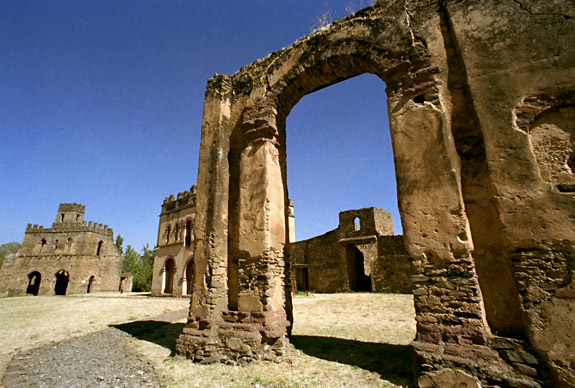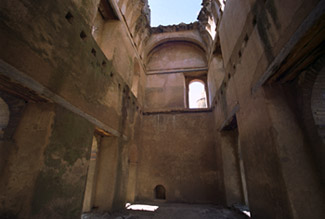Gondar: The Royal Enclosure
Riding in from the airport with other travelers, I tried to explain the level of "ferengi hysteria" I'd inspired thus far; they were sympathetic but somewhat disbelieving until a child at least 15 feet from our taxi spotted me and screamed with delight, "CHEEEEENA!"
Tourists were much more common in Gondar than in Harar but without a hangout area at Circle Hotel, I didn't meet any during my single day in town. Five spiral flights up, my room at Circle was oddly large for being so sparse, offering a lovely view off the balcony and a shower that was genuinely hot.
 |
 |
Tarique spoke fluently with a good sense of humor. Our morning at the castle compound passed comfortably, with none of the language strain with construction workers in the eastern desert or the mild lechery of my guide in Harar.
He'd dreaded getting me as a client, as he'd frequently struggled to lead Korean and Japanese tour groups; complimenting my English, he laughed to hear I was actually American.

The enclosure contained six beautifully-maintained castles; despite the popularity of the site with other African tour groups—some toting extremely fancy cameras—it was quite atmospheric. The stone buildings had survived attacks by the British and the Italians during World War II, but from the balcony where Emperor Fasilidas addressed his subjects, the view remains beautiful and peaceful.
 |
The final stop was predictably the gift shop. However, there was no pressure, the crafts were skillfully made and one particular artist was present. Small wooden diptych and triptychs icons are typical to the historical circuit, created as a collaboration between a wood carver and a painter. This talented painter allowed me to watch him work and sweetly avoided making a direct sale. I was happy to buy two of his exquisite icons after a great deal of deliberation...they were all stunning.
I promised to come back with the cash; the trusting artist seemed unperturbed. My ticket was good for the day so I returned to enjoy the castles' ambience in the softer light of the afternoon before heading back to gift shop. The gratitude on the painter's face as he grasped both my hands, intoning "thank you...thank you..." nearly moved me to buy up his entire stock.